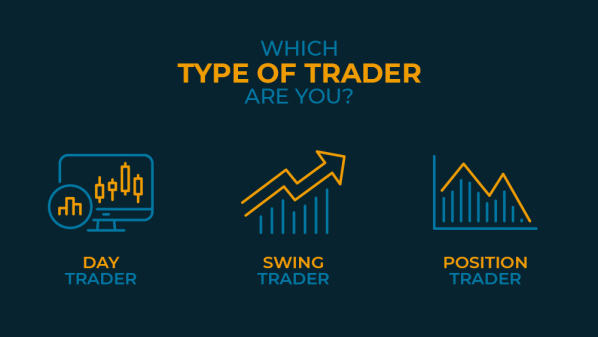
Below are the details of key things you would learn in this article
• Why it essential to know the type of trader you are
• And also The types of traders others are
• Is there's a superior trading style to adopt?
WHY DO YOU NEED TO KNOW?
Knowing your trading strategy and which type of trader your are is the top factor to know. As said by The great philosopher Aristotle, “knowing yourself is the beginning of all wisdom”. This statement rings true still through the fabric of time. The reason is that self-awareness is so foundational that every other thing must build up from it.
As a forex trader, knowing the type of trader you are is pivotal to a successful trading career. If you don't know yourself, you won't know what your strengths are and how to leverage them, you'll also not know what to avoid.
Many forex traders who have figured this out have been able to optimize their forex trading career for higher/greater profitability
DIFFERENT TYPES OF TRADERS
Forex traders are differentiated by their manner of approach to taking positions in the market and the length of time theyre willing to hold on to their trades.
The following are the types of traders that exist;
• The Scalper:
Forex scalping involves trading currencies with only a brief holding time, and executing multiple trades each day. Forex scalpers keep risk small in an attempt to capture small price movements for a profit. The small price movements can become significant amounts of money with leverage and large position sizes.
They are not interested in holding trades for a long time because theyre more interested in making short-burst profits from the market and not getting tied down to one position.
They trade so frequently throughout the day, intending to accumulate all of their small gains, to sum up to substantial sums at the end of their trading session. They usually trade at the busiest (most liquid) times. Scalpers are all in for the thrills and the shrills that come with the fast lane.
A scalper can take as many as 50-100 trades in a single day as they are constantly monitoring the markets for potential entries and closely watching their charts to exit trades quickly.
The Scalper typically analyses and places trades within the 1 minute and 5 minutes time frame on their trading platform. To be a scalper, youve really got to be agile, observant, and quick in execution. Scalp trading, also known as scalping, is a popular trading strategy characterized by relatively short time periods between the opening and closing of a trade.
• The Day Trader
Forex day trading involves buying and selling currencies within a single trading day – closing out positions at the end of each day and starting afresh the next.
As the name implies, this type of trader focuses his trading activities to span within one day.
This means that such a trader does not allow his trades to run into another day but rather closes any and every trade before the day runs out.
Since all the opened trades would be closed within 24-hours, the Day-trader could open more than one trade and enter each with a sizable lot size (but of course, probably not as many or voluminous as the Scalper).
Day traders generally use leverage such as margin loans; in the United States, Regulation T permits an initial maximum leverage of 2:1, but many brokers will permit 4:1 intraday leverage as long as the leverage is reduced to 2:1 or less by the end of the trading day.
Day-traders attempt to interpret what the market would do within a day and then based on their analysis, they enter positions that they allow to run for some time.
To this end, they typically put a lot of emphasis on technical analysis and volatile pairs to make their profits. They also like the Scalpers, look out for opportunities within short time frames. The Day-Trader typically analyses and places trades within the 5 minutes, 15 minutes to 1-hour timeframe on their trading platform.
• The Swing Trader
This type of trader usually holds on to trades for periods ranging from a few days up to weeks at a stretch.
Typically, individuals or institutions with sizable capital are the type of people you would find in this category.
They are comfortable enough to not run after daily profits but to rather wait out their positions for longterm to make more sizable gains after their expected structure plays out.
These traders are a lot more relaxed than the two aforementioned types. Although they still monitor their positions from time to time, they do not do this as incessantly as the former two would.
These type of traders are more long-term focused, as such, they try not to focus on daily ups and downs in the markets. They analyze and take their trades on the 4-hour, Daily, and Weekly timeframe on their trading platform.
A question that may come to your mind and which is important also to ask is
OUT OF THE 3 TRADING STYLE DISCUSSED ABOVE, WHICH IS THE MOST PROFITABLE?
The reality is , no one trading style is superior to another. Every trading style can be equally profitable. You choose which trading style to adopt based on your personality and time allowance type rather than the assumed profitability of it.
Also, each trading style can be highly profitable if proper trading strategy, risk management, and good psychology are adopted.
There are a few other types of traders namely;
• The Position Trader
• Algorithm Trader
• Event-driven Trader.
Above we just mentioned 3 other types of traders without explaining any, hopefully we will explain in our next article.
Leave a Reply